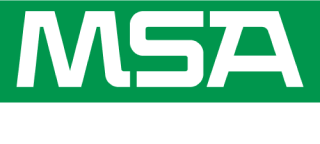
Temporary Horizontal Lifelines (THLL) are a type of anchorage connector that allows workers to walk back and forth across an area where there was not an anchorage point or anchorage connector available before. Industries with jobsites that are constantly changing, such as construction, bridgework, maintenance, and general industry oftentimes require the use of temporary horizontal lifelines.
When setting up a temporary horizontal lifeline, there are some important things to always keep in mind, such as anchorage requirements and weight capacity. But what else do you need to know when using this fall protection solution?
Here are answers to some of the most frequently asked questions about temporary horizontal lifelines.
How long can a temporary horizontal lifeline be?
MSA horizontal lifeline lengths are up to 60ft (ANSI) or 100ft (OSHA). All lengths of horizontal lifelines can have a maximum of two users.
How long can a temporary horizontal lifeline system remain installed in one location?
There is no time limit for how long a system can remain installed in a location as long as the system is passing all pre-use inspections and the user confirms the system is at proper tension before use. Be sure to read the user manual for all inspection requirements.
The system should be removed from service if:
- the system has been subjected to the forces of arresting a fall
- labels are missing or illegible
- there is evidence of improper function, improper fit, or alteration of any component
- inspection reveals excessive wear, damage or misuse to hardware elements or synthetic elements as outlined in inspection guidelines
- white tear webbing is visible protruding from the energy absorber cover
Who can install a temporary horizontal lifeline system?
Temporary horizontal lifeline systems can be installed and used by a competent professional; however, the configuration and anchor point strength must be approved and certified by a Qualified Person or engineer.
A Qualified Person is an individual with a recognized degree or professional certificate, and extensive knowledge and experience in the subject field, who is capable of design, analysis, evaluation, and specification in the subject work, project, or product. [1]
What tools are needed to install a temporary horizontal lifeline system?
Typically, wrenches, nuts, and bolts are needed to install a temporary horizontal lifeline system. The new MSA Cable and Rope Temporary Horizontal Lifelines both feature completely tool-less installation, helping to save time and increase efficiency on the jobsite. In fact, the cable system allows for an up to 75% faster install than traditional systems. Use this calculator to find out how much time you could save during lifeline setup.
What is the capacity of MSA’s horizontal lifeline system?
The system capacity is two users, with each user up to 310lbs, including clothes and tools. Users may work on the same side or opposite sides of the cable.
What is the anchorage requirement for MSA’s temporary horizontal lifelines?
Allowing a 2:1 safety factor, end anchorages must be capable of sustaining a force of 5,000 lbs (22.2 kN) without deformation in directions permitted by the system. This applies to use with both one and two users. For the US, anchors must meet the OSHA safe use standard for connectors. A Qualified Person or engineer must certify the strength of each anchor point.
What types of anchorage connectors can be used with a cable temporary horizontal lifeline system?
MSA anchorage slings, stanchions (<=60ft THLL), installed anchorage connectors, removable anchors, beam straps, etc. rated to 5,000lbs / 22kn may be used.
How are stanchions used in conjunction with temporary horizontal lifelines?
Stanchions, including the completely tool-less MSA Bridge Stanchion, are used as ends of a temporary horizontal lifeline to connect the system to a steel or concrete anchorage. Stanchions are to be used as part of a compatible single-span horizontal lifeline system where horizontal mobility and fall protection are necessary.
Learn more about MSA’s new, easy-to-use tool-less temporary horizontal lifelines.
Footnotes
- OSHA 1910.140, 1926.32, and 1926.502







